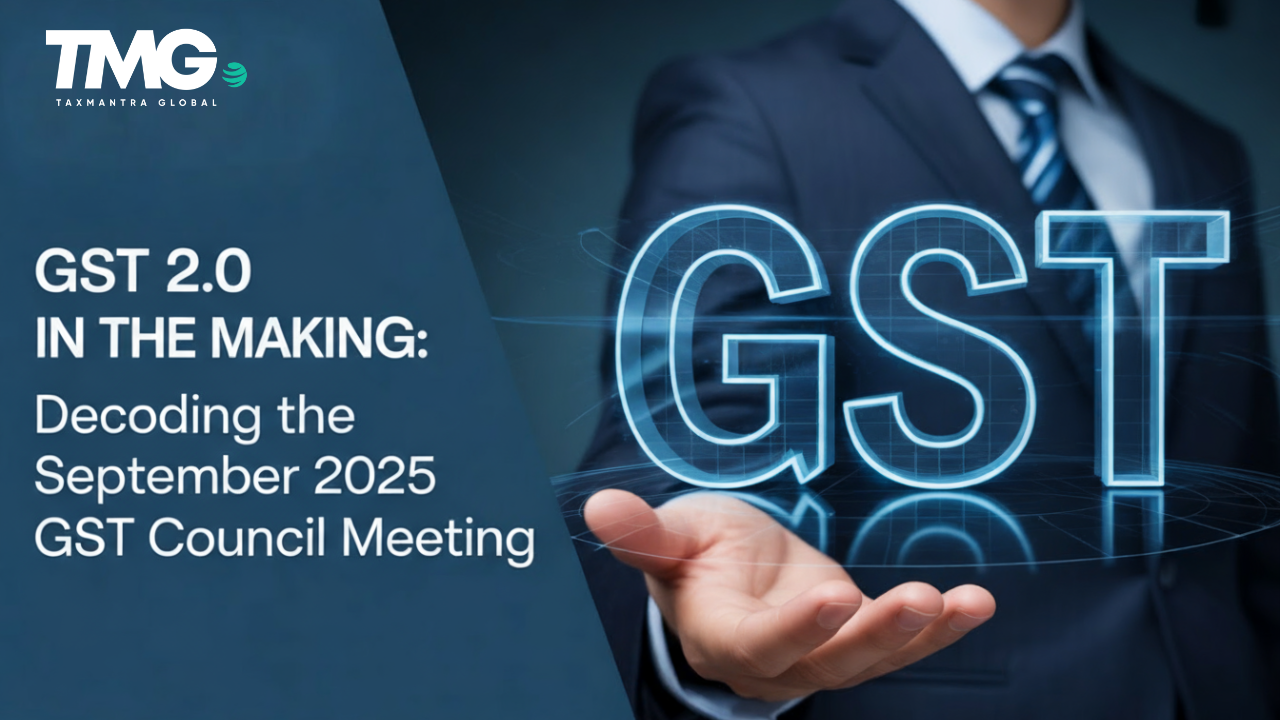GST 2.0 in the Making: Decoding the September 2025 GST Council Meeting
The Goods and Services Tax (GST) regime has often been described as a “work in progress” since its landmark rollout in 2017. Eight years later, the September 2025 GST Council meeting gave us a glimpse into what could be called GST 2.0 — a framework that aspires to move beyond rate rationalisation and compliance firefighting, toward becoming a genuine enabler of business growth.
While the fine print of the reforms will roll out in stages, the intent of the Council was clear: simplify, digitise, and harmonise. Below, we break down the key themes from the meeting and analyse what they mean for businesses of different sizes and sectors.
1. The Push for Seamless Input Tax Credit (ITC)
One of the most persistent pain points for businesses has been the fragmented system of input tax credits. For companies operating across multiple states, ITC often gets locked up due to jurisdictional mismatches and procedural hurdles.
The Council has now signaled that it is working toward cross-state ITC harmonisation. If implemented, businesses could offset credits more freely without worrying about state boundaries. This will be a game-changer for large corporates and pan-India startups alike, as it reduces working capital blockages and reliance on external funding for day-to-day operations.
Our take: Expect resistance from some states on revenue-sharing mechanics, but once a framework is finalized, this could be one of the most impactful reforms since GST’s inception.
2. AI and Automation Take Center Stage
Another striking theme was the Council’s commitment to AI-powered compliance monitoring. This represents a shift from reactive notices to real-time detection of mismatches and anomalies through machine learning systems embedded in the GST Network (GSTN).
For taxpayers, this has a double-edged implication:
- Positive:Faster reconciliations and refund approvals, fewer delays due to manual intervention.
- Challenging:Minimal tolerance for errors, as AI-based systems will quickly flag discrepancies in invoices, filings, and reconciliations.
Our take: Businesses that invest in data hygiene and automation of GST processes will thrive in this new regime. Those still relying on manual reconciliations may find themselves facing frequent queries or blocked credits.
3. Relief in the Pipeline for SMEs and Startups
Startups and SMEs, often overwhelmed by compliance burdens, were not left out of the discussions. The Council proposed simplification of returns by merging overlapping forms and reducing duplicate data entry across monthly, quarterly, and annual filings.
This could free up bandwidth for smaller businesses to focus on growth rather than paperwork. For early-stage founders juggling product development, fundraising, and customer acquisition, the change would mean fewer nights spent on compliance checklists.
Our take: Simplification needs to go hand-in-hand with execution. If the GSTN portal upgrades smoothly and the forms are genuinely streamlined, SMEs may finally see GST compliance as a partner rather than a burden.
4. Sector-Specific Solutions
Not all industries face the same GST challenges, and the Council acknowledged this nuance. Discussions touched on:
- Transport & logistics: Streamlined credit utilisation for inter-state fleets.
- Exports: Faster refund cycles, possibly through pre-validated AI-driven claims.
- Hospitality: Reworking of credit blockages in high-input sectors where refunds often stall.
This signals a willingness to customise GST to sector realities, instead of applying a one-size-fits-all approach.
Our take: If executed, this will be a positive shift from uniformity to flexibility, improving sector competitiveness in global and domestic markets.
5. The Bigger Message: From Compliance Burden to Growth Framework
The underlying tone of the meeting was not about minor tweaks but about transforming GST into a system that enables business growth. The combination of seamless credits, automation, and sector-focused relief has the potential to:
- Improve cash flow across industries.
- Reduce compliance-related litigation.
- Attract investor confidence by making Indian tax systems more predictable and efficient.
But the shift also raises expectations. Businesses will be expected to be digitally ready, transparent, and proactive in compliance. Gone are the days of “adjust later”; GST 2.0 is shaping up as a real-time, tech-first regime.
What Businesses Should Do Now
Even as the reforms are rolled out in phases, companies can take proactive steps today:
-
Audit GST Processes Internally
Identify gaps in reconciliations, mismatched credits, and vendor non-compliance. AI-based scrutiny will not leave these unnoticed.
-
Invest in Technology
Move to automated GST reconciliation and filing tools that integrate with ERP/accounting systems. Manual workarounds won’t hold up.
-
Strengthen Vendor Onboarding
Ensure vendors are GST-compliant; a single non-compliant vendor could delay your refunds.
-
Track Policy Updates Closely
Sector-specific reliefs may unlock opportunities — exporters, for instance, should prepare for faster refund processing.
GST2.O: Big Savings on Groceries, Medicines, Insurance and Fewer Tax Slabs
Conclusion
The September 2025 GST Council meeting was not about tinkering at the edges. It was about laying the foundation for GST 2.0 — a system where compliance becomes smoother, credits more fluid, and refunds faster, powered by technology and sector-aware policymaking.



